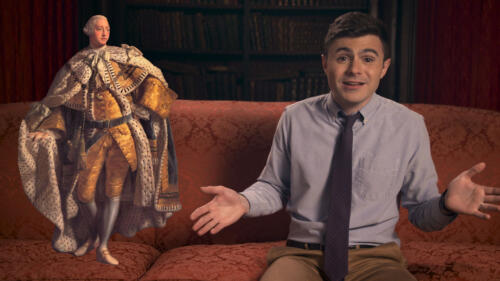Early U.S.
The years following the American Revolution were challenging for the new nation, as it contended with the Articles of Confederation, Shay's Rebellion, Federalism, the Alien and Sedition Acts and more.
Featured Overview
Before the U.S. Constitution was the law of the land, there were the Articles of Confederation. Find out why they didn't last long.
2:18m watch

Getty Images
Featured Overview
Before the U.S. Constitution was the law of the land, there were the Articles of Confederation. Find out why they didn't last long.
2:18m watch
Start Here

Shays' Rebellion was a series of attacks on courthouses and other government properties in Massachusetts that helped spur the creation of the U.S. Constitution.

Federalism, or the separation of powers between state and federal government, was entirely new when the founders baked it into the Constitution.

The Alien and Sedition Acts were a series of four controversial laws passed by the U.S. Congress in 1798 that severely curtailed freedom of speech and of the press.

A surplus of U.S. corn crops led to a boom in whiskey sales—and consumption—following the Revolutionary War.
The Rise and Fall of Freemasons in the U.S.
The Rise and Fall of Freemasons in the U.S.
The secret society known as the Freemasons had more of an influence over the inception of the United States than many might realize.
8:11 watch

3 Early Political Parties That No Longer Exist
Explore All Related Topics

Explore the myth that Freemason symbols are secretly embedded in objects and places around the world.

What is the secret handshake, and what are those symbols all about, anyway?

Sensationalist headlines played off tensions between Spain and the United States in a time when raucous media found a voice.

In the 17th and 18th centuries, students at America’s elite universities were treated differently based on the social stature of their parents.

John Jacob Astor fed a growing international addiction—and helped fuel a 19th-century opioid crisis.

Skeletal analysis of troops at the Battle of the Little Bighorn suggests a very different outcome.

The Whiskey Rebellion was a 1794 uprising of farmers and distillers in western Pennsylvania in protest of a whiskey tax enacted by the federal government.

The tradition began during a time of national sorrow

That hall monitor used to be much more powerful.
Before the U.S. Constitution was the law of the land, there were the Articles of Confederation. Find out why they didn't last long.
2:18m watch

The Pledge of Allegiance has been used in the United States for over 100 years, yet the 31-word oath recited today differs significantly from the original draft. The idea of a verbal vow to the American flag first gained traction in 1885, when a Civil War veteran named Colonel George Balch devised a version that […]

Get the story behind the uprising that propelled the Constitutional Convention to form a stronger national government.

The military's highest recognition for valor has been bestowed to some 3,500 Americans. Only a handful have received it twice.

A diplomatic incident between the United States and France in 1797 outraged Americans and led to an undeclared war.

The controversial general was killed at the Battle of the Little Bighorn.

Delve into the history of America’s military.

Get the facts on six of the most famous domestic disputes in American history.

It may surprise you that one of the most notable entrepreneurs of the American frontier didn’t wear a jacket, tip his hat and shine his shoes, but rather dressed in a coffee sack, donned a tin hat and traveled barefoot. John Chapman, better known as Johnny Appleseed, was a 19th-century horticulturist who made great contributions […]

Shays' Rebellion was a series of attacks on courthouses and other government properties in Massachusetts that helped spur the creation of the U.S. Constitution.

The Gnadenhutten Massacre occured when Pennsylvania militiamen slaughtered some 90 unarmed Native Americans at a Moravian mission settlement in Ohio in 1782.

The Federalist Papers are a series of essays written by Alexander Hamilton, James Madison and John Jay supporting the Constitution and a strong federal government.

George Armstrong Custer rose to fame as a young Union commander in the Civil War before his death at the Battle of the Little Bighorn in 1876.

The Federalist Party was an early U.S. political party that fought for a strong federal government. Supporters included John Adams, Alexander Hamilton and John Jay.

The Alien and Sedition Acts were a series of four controversial laws passed by the U.S. Congress in 1798 that severely curtailed freedom of speech and of the press.

The Articles of Confederation, composed in 1777 and ratified in 1781, granted powers to Congress as the first written constitution of the United States.



